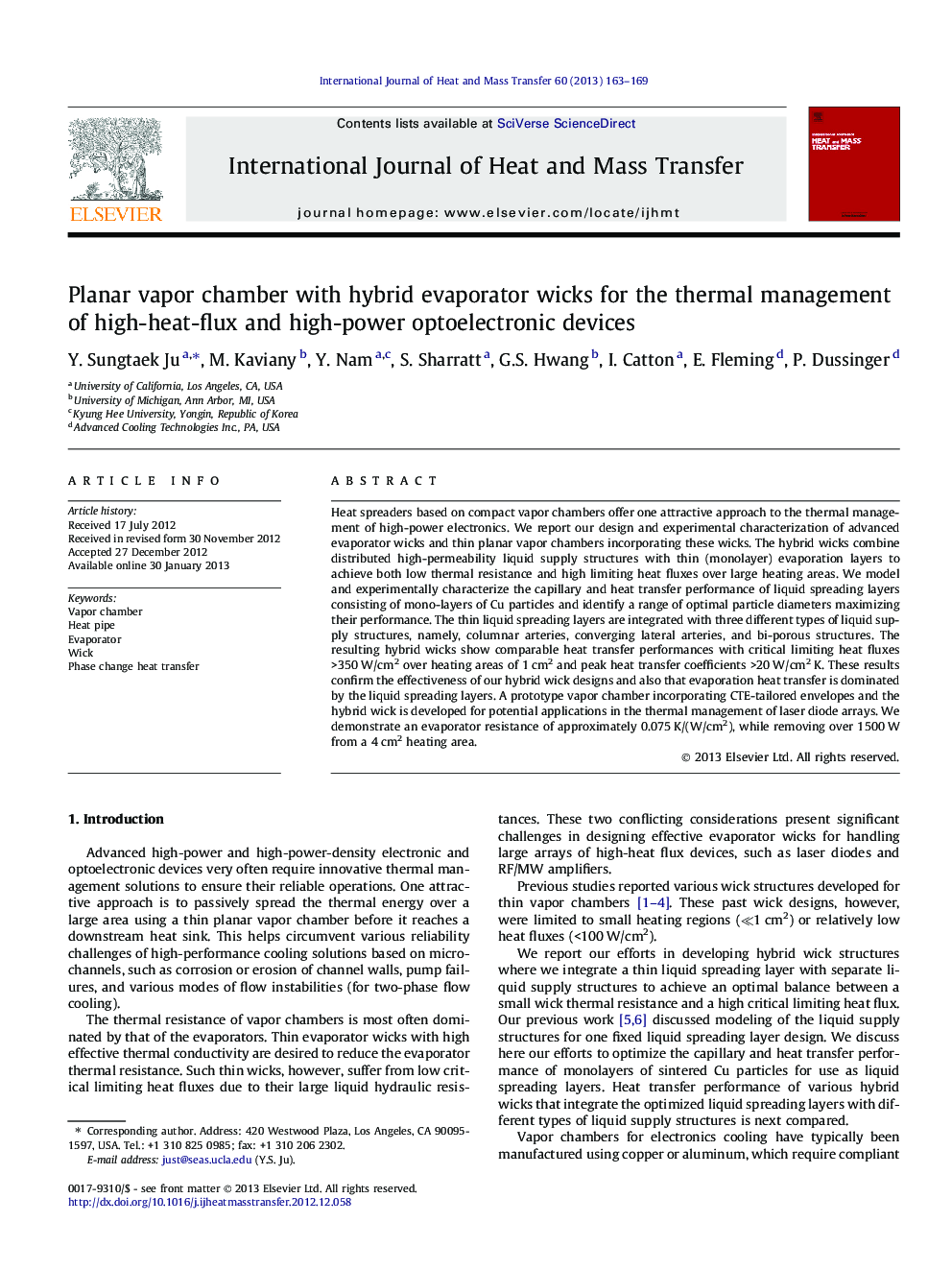| Article ID | Journal | Published Year | Pages | File Type |
|---|---|---|---|---|
| 658288 | International Journal of Heat and Mass Transfer | 2013 | 7 Pages |
Heat spreaders based on compact vapor chambers offer one attractive approach to the thermal management of high-power electronics. We report our design and experimental characterization of advanced evaporator wicks and thin planar vapor chambers incorporating these wicks. The hybrid wicks combine distributed high-permeability liquid supply structures with thin (monolayer) evaporation layers to achieve both low thermal resistance and high limiting heat fluxes over large heating areas. We model and experimentally characterize the capillary and heat transfer performance of liquid spreading layers consisting of mono-layers of Cu particles and identify a range of optimal particle diameters maximizing their performance. The thin liquid spreading layers are integrated with three different types of liquid supply structures, namely, columnar arteries, converging lateral arteries, and bi-porous structures. The resulting hybrid wicks show comparable heat transfer performances with critical limiting heat fluxes >350 W/cm2 over heating areas of 1 cm2 and peak heat transfer coefficients >20 W/cm2 K. These results confirm the effectiveness of our hybrid wick designs and also that evaporation heat transfer is dominated by the liquid spreading layers. A prototype vapor chamber incorporating CTE-tailored envelopes and the hybrid wick is developed for potential applications in the thermal management of laser diode arrays. We demonstrate an evaporator resistance of approximately 0.075 K/(W/cm2), while removing over 1500 W from a 4 cm2 heating area.
